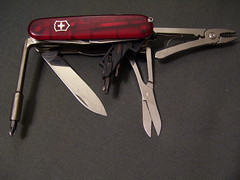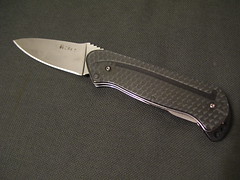◆ Dottie Gold-Humphreys, October 1999 - 9 December 2013
Less than five months after getting married and moving into an apartment together, my wife, Becca, and I got a pair of cats. They’d been with a friend of ours for about ten years, longer even than she’d known her husband. She and her husband loved them dearly despite their cat allergies, but their two-year-old was turning out to be allergic and was terrorizing the cats (as only a two-year-old can do) to boot, so they were reluctantly looking for a new home for the cats. Thus it was that on January 31st, 2009, Becca and I took Nico and Dottie to our apartment to live with us.
Once the cats got used to the apartment, they settled into distinct roles. Nico was used to getting his way with everything and tended to crowd Dottie out when there was something he wanted. We were always worried about her getting enough food because even though we gave them separate bowls she usually wouldn’t eat until he’d finished. Nico would often eat so quickly that he’d immediately regurgitate some of his food, which Dottie would promptly eat. It was a little gross, but we felt oddly comforted by it, because we knew Dottie was actually eating something. (We had Nico on a diet because he was 20 pounds when he should have been about 15. Dottie always seemed a little scrawny at her 7 pounds.)
Nico was always the cat that would greet newcomers to the house and aggressively demand attention, but Dottie was Becca’s special baby. Dottie always seemed prim and dainty, especially when compared to the more boisterous Nico.
Becca delights in nicknames for people, cats, cars, and probably other entities too. Nico and Dottie were no exception and went through a plethora of names, including Small Cat, Muffin, Princess, and Sneezy for Dottie. “Princess Baby” was probably the most long-lived nickname for her (as was “Fatty” for Nico).
In February 2011, Nico developed kidney cancer and that April we made the difficult decision that it was time to let him go. Dottie mourned Nico for a time—at least it seemed that way. She was even more withdrawn than usual and I think she missed his presence in some sense or other. Eventually, though, she blossomed in a way that she had never done around him. She became more confident around the house; she hid under things a lot less; and she was a lot more comfortable around other people. For all that we loved Nico, I think Dottie was a lot happier by herself.
Both Dottie and Nico had had renal problems for pretty much their entire lives. When we got them, we continued their diet of kidney-friendly food (high in calories, low in protein) and we had bloodwork run on them periodically to make sure they were doing okay. The bloodwork measured levels of substances that the kidneys should be removing from the blood. For both cats, those levels were always higher than what a cat should normally have, but they never worsened into areas that would be problematic.
Until a couple of months ago. I forget now what particular symptom prompted the vet visit, but while we were there they ran her bloodwork and her creatinine levels had spiked, indicating a decrease in kidney function. At the vet’s recommendation, we started administering subcutaneous fluids to help flush out her system and compensate for the lost kidney capacity. We had done this with Nico, and he had been easy to handle. He seemed to enjoy the attention, even though we were sticking him with needles on a regular basis. (One vet tech told us that he was the only cat she’d seen who didn’t react at all when she took his temperature rectally.) Dottie was a lot less happy about the fluids. Although she eventually became more accustomed to them, she never liked the process and it took both of us to hold her while we were administering them.
The fluids plus a few pills to also supplement her kidney function held her for a month or so and seemed sustainable; we’d be doing them for the rest of her life, but it seemed likely that they’d be able to sustain her for some time to come while preserving her quality of life.
In November we moved into a new house. I was worried that Dottie would be disoriented by the change and would be unhappy with the new house, especially since there were stairs and she was starting to look a little arthritic in her back legs. She took to the house surprisingly well, however. She seemed happy to go up and down the stairs and explore everything in the place. Unfortunately, we discovered fleas several days after moving in. Most of the house has hardwood floors, but we fogged the entire place (spending several hours with Dottie in the old apartment) and put flea powder down on the carpets. We kept Dottie in our bedroom while the flea powder was down.
After about a week at the new house (and about three weeks ago), Dottie stopped eating. She’d gone through phases of not eating in the past and we had an appetite stimulant on hand for times when it went on for more than a couple of days. Correspondingly, after a couple of days, we gave one to her. It didn’t appear to have any effect. We thought she might not have gotten it (sometimes she managed to make us think she took her pills but would spit them out later), so we waited three days (the minimum dose window) and gave her another. When that one also had no effect, we started syringe-feeding her and we took her to the vet as soon as we could. The vet found that she was very anemic—another side effect of the kidney dysfunction—and prescribed an injection that would fill in for the red-blood-cell-creation function of the kidneys.
After about a week on the injection, Dottie started recovering. She started becoming more energetic and she started eating again. We were administering a lot of treatments at that point, but it seemed likely that once she recovered more we could stop some of them and go back to just the handful of maintenance treatments.
In the last couple of days, though, her appetite dropped off again. We attributed this to one of the supplemental (and bad-tasting) drugs we were giving her, so we decided to just stop that one. It was for nausea relief and she was already on a couple other things with the same effects. Sunday night she seemed to be wheezing a bit but was otherwise about the same as she had been, so we just figured we’d mention the wheezing when we took in for her scheduled vet visit on Wednesday.
On Monday morning Becca and I woke up, showered, got dressed, gave Dottie her pills, syringe-fed her a bit, wished her goodbye, and went to work. When we came home that evening, she was dead.
Our vet is of the opinion that, given everything that we know, she probably went peacefully. That gives a little consolation, as does the fact that we’d been deliberately spending time with her—carrying her out to the couch to sit with us as we ate, talked, and watched TV—but we never really said goodbye, because we really didn’t expect this so soon. We thought the treatments we were giving her would hold her for at least a few weeks, by which point we’d be able to tell whether she’d be able to recover from the most immediately-threatening symptoms like the anemia. We figured we’d be in store for a difficult decision about what would be best for her at that point, but we really expected her to live until then.
So this is the best I can do for now: Goodbye, Dottie. You were our princess baby and you were a special and unique cat. We will miss you and you will remain special to us for the rest of our lives.



